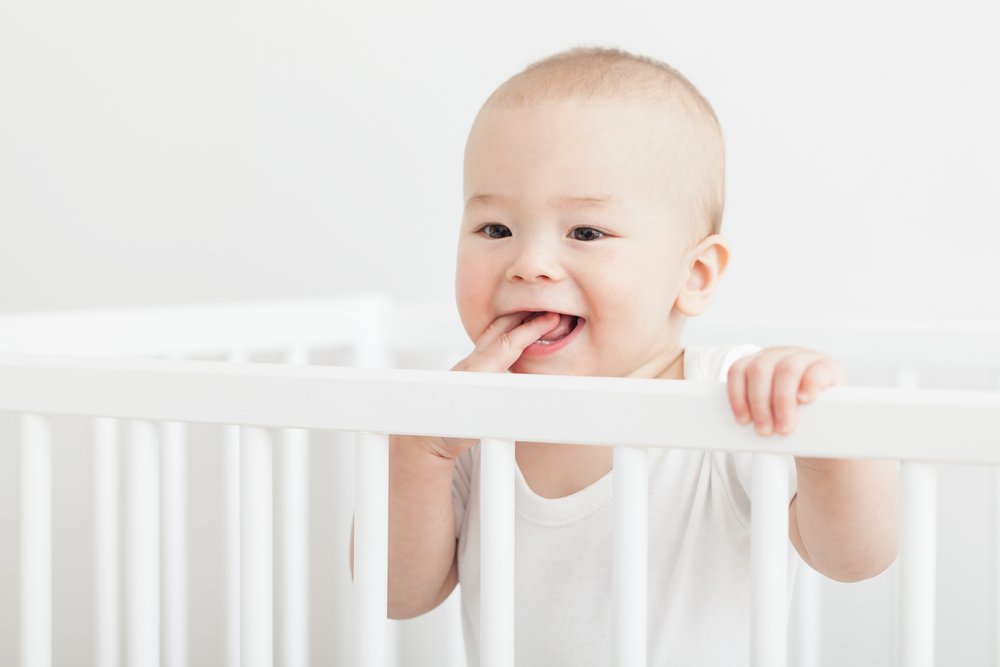Key points:
1. Standing up is a key physical milestone that typically occurs between 9 and 14 months.
2. It involves various skills such as pulling up to stand, transitioning from sitting to kneeling, and developing fine motor control.
3. Encourage your baby to pull up to stand by providing reachable toys and safe furniture.
4. Support your baby’s leg and core muscle development through activities like bouncing exercises and gently helping them transition between sitting and standing.
In this article, we want to discuss a very cool milestone you’ll see in your little one’s physical journey: standing up. This process might take place between 9 and 14 months and is a precursor of other motor skills, such as walking, running, and jumping. Standing engages most of your little one’s muscles and requires impressive fine-tuning in order to achieve balance. This is why you’ll have to wait almost until their first birthday before your baby pulls up to stand and gets off the ground!
Skills needed to stand up
Standing might seem like a simple milestone, but if you take into account that it uses most of your little one’s muscles, you’ll understand that this one achievement involves the acquisition of different sets of skills.
Let’s talk about what you might observe in your little one’s process, starting with the most common skills that you’ll begin to notice around 9 months of age.
Baby pulls up to stand, holding on to furniture
One of the first things you might notice is when your little one starts to pull themselves up when grabbing onto furniture. For this to happen, they must’ve developed reaching skills beforehand.
How can you support their reaching skills? You can hang some dangling toys in front of them, while they are in their seat and encourage them to reach out for them. With time and practice, you’ll see how they start dominating this skill. Being able to hold on to something is very important and will make your little one feel safe enough to begin pulling themselves up.
They might need some help at first, but you’ll see how they will be able to do it by themselves before acquiring more complicated skills, such as kicking a ball, keeping their balance for longer, or giving their first steps! When a baby pulls up to stand this strengthens their arms, neck, core, and leg muscles. Furthermore, when keeping the position, they are also practicing how to distribute their weight, fostering their balance.
After a while, they will start holding on to tables, chairs, and other furniture, always looking for objects that adapt to their height. Make sure the furniture around them is safe and that nothing can tumble and fall.
Once they have managed to pull up, you can start placing their favorite toys just a tiny bit out of reach on top of safe furniture and encourage them to grab them. This way they will keep exercising the necessary muscles to accomplish a standing position.
It is also recommended to give them some free-range playtime. Give them a chance to explore and foster their curiosity when holding on to different surfaces and heights. Soon enough, they’ll experiment with letting go for a few seconds. We’ll tell you more about this later.
Can go from sitting to kneeling
Your little one keeps getting stronger by the day! Now, we want to talk to you about another cool milestone that they will reach while learning to stand up. As the previous skill, it can also appear around 9 months of age. At this point, they might be gaining better control of their movements.
One of these new controlled movements consists of them changing from a sitting to a kneeling position. Sounds easy, but can you think of a moment when you have done this without involving your arms? To be able to control and repeat this movement, the strengthening of the leg and core muscles is fundamental.
How can you help them obtain the necessary strength? You can do some bouncing exercises with them, in which you hold them by the torso over a surface and help them bounce. You can also pull them to a standing position and then help them sit down by lightly placing them back on the floor.
The first few times they try to stand up by themselves they might end up moving from sitting to kneeling; with no standing. This is part of the process, let them practice as much as they can. Let them move freely while staying by their side.








